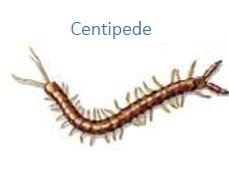
Centipedes are reddish-brown, flattened, elongated arthropods with one pair of legs attached to most of their body segments. The first pair of legs is modified into poisonous jaws located below the mouth to kill insects. Their antennae are longer than those of millipedes. Centipedes feed on live insects and other small animals. they do not damage plants.
They are a nuisance in households and basements. They feed on small insects such as cockroaches, clothes moths, house flies. They do not damage food supplies or household furnishings. If crushed, they may bite causing some pain and swelling.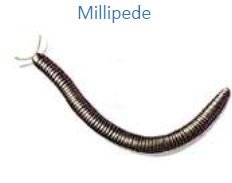
Millipedes are slow-crawling, round bodied pests which have two sets of legs on each body segment. Millipedes develop best in damp and dark locations with abundant organic matter (food). They often curl up into a tight “C” shape, like a watch spring, and remain motionless when touched. The body is long and cylindrical.
Millipedes range from 1-4 inches long and are dark brown in color.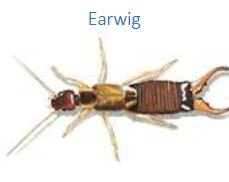
The Earwig name originates from the superstition that they crawl into the ears of sleeping persons and bore into the brain. Although earwigs appear somewhat dangerous due to their forceps, they are practically harmless to man.
Earwigs vary in size from 1/2 – 1 inch in length. They are brown to black in color. Species may be winged or wingless, and only a few species are good fliers. The body ends in a pair of forceps. These forceps are used in capturing prey and mating.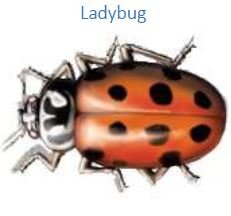
Ladybugs, Harmonia axyridis, are usually about 1/4 inch in length with round bodies. The wings are usually red or orange. Spots will vary. Ladybugs are predators of aphids and the plant pests, so they may be found on a wide variety of plants outside.
As the weather cools in late summer and early fall, the sun warms the southern and western walls of buildings. The warmth attracts these insects to buildings where they crawl inside cracks and stay there for the winter. This would be fine, but during warm winter days, some insects “wake up” and come inside the building.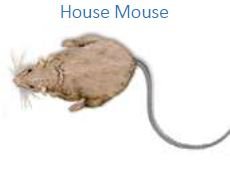
The House Mouse, Mus musculus, is a small rodent that arrived in North America via baggage and stores of the early settlers. These mice are prolific breeders, reaching sexual maturity in just 35 days of life. They have several 21 day pregnancies per yer and product 4-7 offspring per litter. These pests are primarily nocturnal in activity. Their food sources consist of grains, fruit, vegetables, stored food, and refuse.
The House Mouse will grow to about 3-4 inches in body length with a tail up to 4 inches long. In the wild, they vary in color from grey and light brown to black. These mice have become domesticated as “pets” and laboratory test creatures. The colors of the domesticated mouse can vary widely.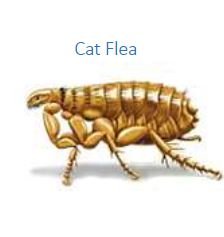
The most common domestic flea is the cat flea, Ctenocephalides felis. The adult cat flea, unlike many other fleas, remains on the host. Adults require a fresh blood meal in order to reproduce. The dog flea, Ctenocephalides canis, appears similar to the cat flea, but is rarely found in the United States. CAt fleas are commonly found on both cats and dogs in North America, while dog fleas are found in Europe.
In order to effectively control an infestation, fleas must be removed from the pet, the home, and the yard. Removal of fleas from the animal alone is futile. Immature fleas, which have developed into adults off the animal, simply jump on causing subsequent re-infestation. Flea combs may be sued to treat the pet, yet they only remove 10-60% of the fleas. By shampooing the animal, the dried blood and skin flakes, which provide food for the larvae, are removed.